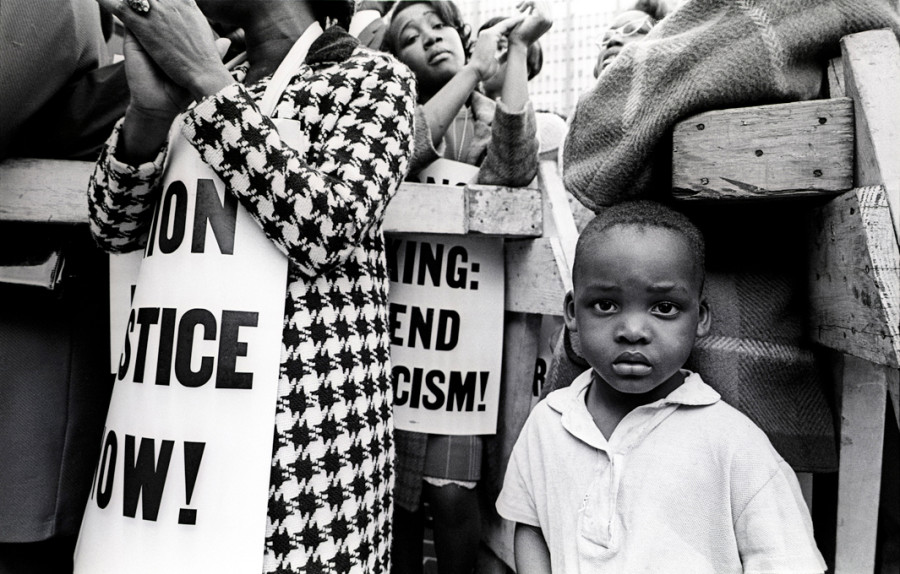By David Rosenberg
Siiri Fernandez paints a picture of her husband, the photographer Benedict J. Fernandez, as a man who communicates predominately through his images. “On our very first date he showed up with a slide projector and a tray of slides of the Brooklyn Bridge at nighttime he wanted me to see. I was properly impressed because they were amazing,” she said in a joint interview with her husband.

Siiri and Ben were married in 1957. In the beginning, photography was a hobby for Fernandez, but it soon became his profession after he was laid off from his job at the Brooklyn Navy Yard with a wife and two kids to support. Fernandez credits New York Times photo editor Ursula Mahoney for giving him some assignments and supporting the way in which he looked at the world. From there he received more assignments and began finding his own stories as well, eventually focusing on the protest movement. When he began to teach, he was equally as invested; Siiri recalled many weekends when Fernandez was away with students on trips, helping them discover their own visions.
“He started photographing protest movements before they were protests,” Siiri explained about her husband’s curiosity and tenacity. “He would hear about something and start taking pictures, no matter what side of the movement. … He is a historic chronicler through pictures.”
Fernandez created his most recognized body of work during the civil rights movements of the 1960s. Along the way, Fernandez also became friends with Martin Luther King Jr.; he documented some of King’s private moments with his family. Currently, a selection of Fernandez’s work from the 1960s is on view at the Bronx Documentary Center in an exhibit titled “The ’60s: Decade of Change.”
Fernandez’s love of photography and teaching led him to become the founder of the Photo Film Workshop at the Public Theater, which started with the goal to educate inner-city children about photography. He also established the photography program at Parsons The New School and built a curriculum that viewed the teaching of photography in a more holistic approach, rather than simply one that was technical.
“If you have a purpose in which to make a statement with photography … go out and start doing what your point of view is. The more you see your personal point of view, the better it is,” he said. “We don’t need repetition, we need your point of view. That’s what I try to teach.”
“The ’60s: Decade of Change” is on view at the Bronx Documentary Center in New York City until July 20.